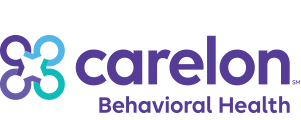Bayside Marin is a premier rehabilitation center dedicated to the treatment of cocaine addiction in California. Bayside Marin blends evidence-based treatments with alternative, holistic modalities to comprehensively treat all aspects of our client’s life.
Understanding Cocaine
Learn about cocaine and substance addiction
Cocaine is a powerful stimulant that is derived from parts of the cocoa plant. Cocaine is a commonly abused drug that is highly addictive. Classified as a Schedule II controlled substance by the United States Drug Enforcement Agency, cocaine has been determined by the government to have a high potential for abuse and can cause severe physical and psychological dependence.
Cocaine is usually abused in one of two forms. Powder cocaine is usually either snorted or dissolved in a solution, then injected. Rock or crack cocaine is heated and the fumes are then inhaled. The impact of inhaling the fumes of crack cocaine is more intense but more short-lived than the high from snorting powder cocaine. In both cases, abusing cocaine causes a rush of euphoria and energy that is often followed by an emotional crash when the effect wears off.
Both the short- and long-term effects of cocaine abuse can be severe, which is why it is crucial to seek treatment as soon as possible. The euphoric rush that results from cocaine abuse is caused by the brain’s release of a flood of the hormone dopamine, which is associated with pleasure. Cocaine abuse also blocks the brain from reabsorbing this drug. Repeated cocaine abuse can alter the brain’s chemistry, making it difficult for an individual to experience pleasure without ingesting the drug. As tolerance increases, cocaine abusers find themselves compelled to use increasingly large or more potent doses in order to achieve the impact that previously resulted from smaller amounts of the drug. Cocaine dependence can occur quickly, trapping the user into an ever-worsening cycle of drug abuse.
Statistics
Cocaine addiction statistics
Research suggests that about 35 million American adults have used cocaine at least once, with about two million Americans having used the drug in the past 30 days. Cocaine abuse is most prevalent among young adults in the 18-to-25 age group, where more than 6% percent of those surveyed told researchers that they had abused cocaine at least once in the previous 12 months.
The dangers of cocaine abuse are documented by the The Drug Abuse Warning Network (DAWN), which reports that about one-fourth of all emergency room visits (or about 450,000 ER visits each year) are due to cocaine use. Furthermore, the World Health Organization estimates that in developed nations between 1% and 3% of the population will engage in cocaine abuse.
Causes and Risk Factors
Causes and risk factors for cocaine addiction
Research strongly suggests that an increased risk of developing an addiction to cocaine can be attributed to a combination of internal (genetic) and external (environmental) influences. Consider the following:
Genetic: Several studies have shown a strong correlation between family history of addiction and suffering from addiction. When people have a parent or sibling who has struggled with cocaine addiction, they are at increased risk of developing a similar problem. Recent inquiries into the genetics of addiction have identified both individual genes and genetic networks that seem to function differently in addicted individuals than they do in people who have not struggled with this disease.
Environmental: Family history of addiction can also be an environmental influence. Children who grow up in houses where cocaine is freely used are at increased risk for abusing this drug themselves. Geography and socioeconomic status can also play a role, with those who grow up in impoverished neighborhoods more likely to engage in substance abuse than those who did not struggle with the impact of poverty through their formative years.
Risk Factors:
- Gender (cocaine addiction is more common among men than among women)
- Age (young adults have the highest rate of cocaine abuse)
- Family history of cocaine abuse or cocaine addiction
- Personal history of substance abuse
- Family history of mental illness
- Personal history of mental illness
- Personal history of enduring trauma
Signs and Symptoms
Signs and symptoms of cocaine addiction
No one sign or symptom is definitive proof that a person has been abusing or become addicted to cocaine. However, exhibiting several of the following signs could be indicative that a person has a cocaine problem:
Behavioral symptoms:
- Associating with individuals who use cocaine
- Erratic behavior
- Stealing from friends and family members
- Outbursts of raw emotion
- Increased energy and talkativeness
- Constantly attempting to borrow money
- Possessing drug paraphernalia
Physical symptoms:
- Sexual dysfunction
- Pupil dilation
- Insomnia or decreased need for sleep
- Muscle spasms
- Irregular heartbeat
- Chronically runny nose and/or nosebleeds
- Decreased appetite
- Burns on lips and/or fingers
- Scabs and sores from injections
Cognitive symptoms:
- Disorientation
- Inability to focus
- Feeling invincible or all-powerful
- Paranoia
Psychosocial symptoms:
- Extreme agitation and impatience
- Expressions of unprovoked anger or aggression
- Hostility
Effects
Effects of cocaine addiction
Cocaine abuse has been associated with a wide range of short- and long-term health effects, including the following:
- Delusions and hallucinations
- Financial trouble
- Legal problems
- Relationship damage
- HIV, hepatitis, and other diseases caused by blood-borne pathogens due to intravenous drug use
- Heart failure, heart disease, and related problems
- Respiratory failure and other breathing problems
- Stroke
- Damage to nasal passage
Co-Occurring Disorders
Cocaine addiction and co-occurring disorders
The following are among the more common co-occurring disorders among individuals who have abused or become addicted to cocaine:
- Depression
- Anxiety disorders
- Attention-deficit/hyperactivity disorder (ADHD)
- Oppositional defiant disorder (ODD)
- Bipolar disorder
- Additional substance use disorders
Withdrawal & Overdose
Effects of cocaine withdrawal and overdose
Effects of cocaine withdrawal: Attempting to stop using cocaine after an extended period of abuse or addiction can be a painful experience. The following are among the more common withdrawal symptoms that are experienced by people who are trying to stop using cocaine:
- Anhedonia (inability to experience pleasure)
- Strong drug cravings
- Sexual dysfunction
- Tremors and spasms
- Muscle pain
- Manifestation of symptoms synonymous with a mental illness or illnesses
- Physical and mental exhaustion
- Disrupted sleep patterns
Effects of cocaine overdose: Cocaine overdose can result in significant damage, including death. The following signs of cocaine overdose require immediate medical attention:
- Dramatic increase in blood pressure
- Breathing problems
- Rapid heartbeat
- Profuse perspiration
- Dilated pupils
- Delirium
- Seizure
- Unresponsiveness










